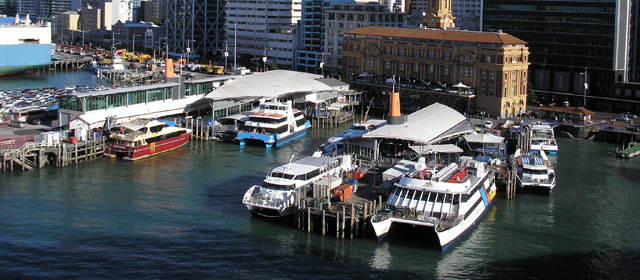Story summary
Early boats
In early colonial times, roads and bridges were poor or non-existent, so water transport was vital – and much faster than land transport. Sail-powered boats were used – but they could not follow timetables, because they depended on the wind. Steamers were introduced in the 1860s.
Harbour ferries
From the late 19th century Auckland Harbour was busy with ferry services, which ran from the city centre to the North Shore and the Hauraki Gulf. Ferries also operated on Wellington and Otago harbours.
Due to competition from cars, trams and buses, and the opening of the Auckland Harbour Bridge in 1959, many harbour ferry services were cut. However, in the 2000s, they made a comeback in Auckland, Wellington and Lyttelton.
River ferries
Before bridges were built, people crossed rivers using ferries – often punts that were pulled across the river by a rope or chain. A punt still operates at Tuapeka Mouth in Otago. Regular ferry boat services also ran up and down some longer rivers, such as the Clutha and Whanganui.
Lake ferries
Ferries also ran on larger lakes such as Taupō, Rotorua and Wakatipu, carrying goods, mail and people between lakeside settlements and to farms. During the 1860s Otago gold rushes, Lake Wakatipu’s ferries brought in supplies for miners and carried out gold. Most lake ferry services stopped after roads were built nearby.
Coastal ferries
Coastal ferry services were once common. Most ran between a city and smaller local ports, such as between Dunedin and Ōamaru, Nelson and the bays, or Auckland and Thames.
Steamers also ran from the South Island’s West Coast to the main centres. From 1883 an express ferry ran from Auckland to Lyttelton (Christchurch’s port), via New Plymouth and Wellington.
Cook Strait ferries
From 1895 till 1976 there was a ferry service between Lyttelton and Wellington. In 1968 one of the ships, the Wahine, sank in Wellington Harbour during a severe storm, and 51 people drowned.
From the 1960s the government operated ferries between Picton and Wellington. They were ‘roll-on roll-off’ – cars and trains could be driven on board and driven off at the other end. Although they are known for rough trips, the Cook Strait ferries are an important part of New Zealand’s transport system.





